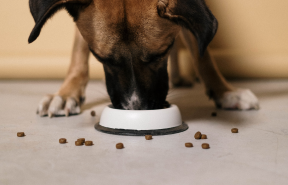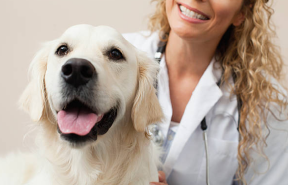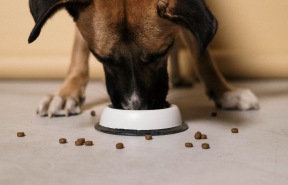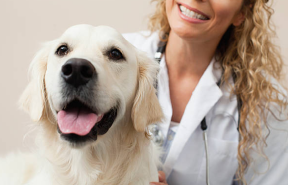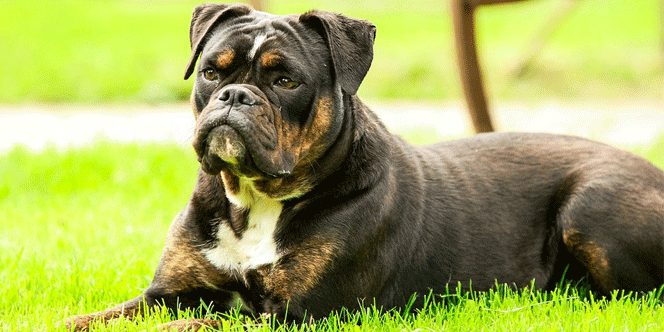80% of dogs aged over 3 years have some form of gum disease, yet less than 10% of pet parents realise their pet has a dental health issue. By establishing a good oral health routine from a young age, your dog can avoid becoming part of this statistic.
JANUARY 15, 2019
Puppy 03 puppy feeding time from Advancepet on Vimeo.
The stats
80% of dogs aged over 3 years have some form of gum disease, yet less than 10% of pet parents realise their pet has a dental health issue. By establishing a good oral health routine from a young age, your dog can avoid becoming part of this statistic.
Teething
Puppies start losing their temporary teeth (also known as milk teeth) between 4 and 6 months of age. These are replaced by a set of adult teeth. The milk teeth usually fall out easily and are often swallowed by the puppy. Teething can increase chewing and mouthing behaviours, so provide plenty of quality, safe chew toys. By the time a puppy is 7 or 8 months old, they should have all of their permanent teeth.
Gum disease
Gum disease, also known as periodontal disease, is common in dogs, so start dental care while your puppy is young.
Plaque can form on the teeth which contains bacteria and leads to gingivitis (inflammation of the gums). Plaque can then mineralize to form tartar which leads to bad breath and gum recession. If left untreated, this painful condition can eventually lead to tooth loss and even systemic disease such as organ failure.
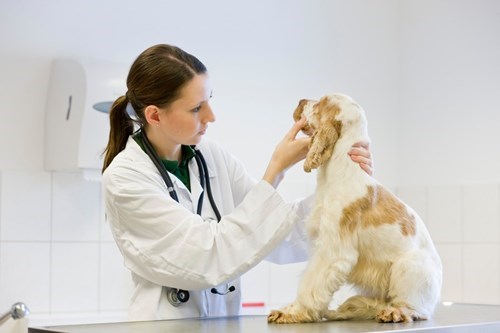
Tooth brushing
Prevention is better than cure, and the most effective way to prevent tartar deposits is to brush your dog’s teeth daily.
Step 1: Start with pet toothpaste
Using washed hands, apply a small strip of specially designed pet toothpaste to your finger and allow your dog to lick it off. Repeat a few times. Pet toothpaste comes in a variety of different pet enticing flavours. Never use human toothpaste as it’s toxic to pets.
Step 2: Now get your dog accustomed to having their mouth and teeth touched
Apply pet toothpaste to your clean finger, lift your dog’s lip and smear the pet toothpaste on the teeth and gums. Start slowly progressing only as far into the mouth as your dog is comfortable. Be gentle and patient and use lots of positive reinforcement (treats, verbal praise).
Step 3: Progress to using a finger-brush and then a doggie toothbrush – start with the canine teeth
Prepare the brush with pet toothpaste and gently brush the canine teeth first. Use an up and down motion, with the toothbrush moving away from the gum to the tip of the tooth. The front teeth are the most sensitive area of your dog’s mouth, so avoid brushing them just yet.
Step 4: Toothbrush the back teeth
After brushing the canine teeth in an up and down motion, now move to brushing the back teeth using a circular motion. Progress only at a pace your dog is comfortable, and keep up the positive reward based training.
Step 5: Toothbrush all the teeth
Once your dog is comfortable with Step 4, hold their mouth closed around the muzzle and gently lift their upper lip to reveal the incisor teeth. Brush these gently in an up and down motion. Some dogs may sneeze when their incisors are brushed.
Gradually increase the amount of time you spend brushing your dog’s teeth. Ideally, toothbrushing should be done every day.
Additional help
Specially designed dental dry food such as ADVANCE™ Dental varieties can be offered when your puppy becomes an adult. Dental treats such as GREENIES™ can be used daily, and fed from 6 months of age. These products are designed to help reduce plaque and tartar accumulation. They can be especially helpful for pets who won't allow their teeth to be brushed.
Follow these tips, to keep your dog’s pearly whites in top shape!

